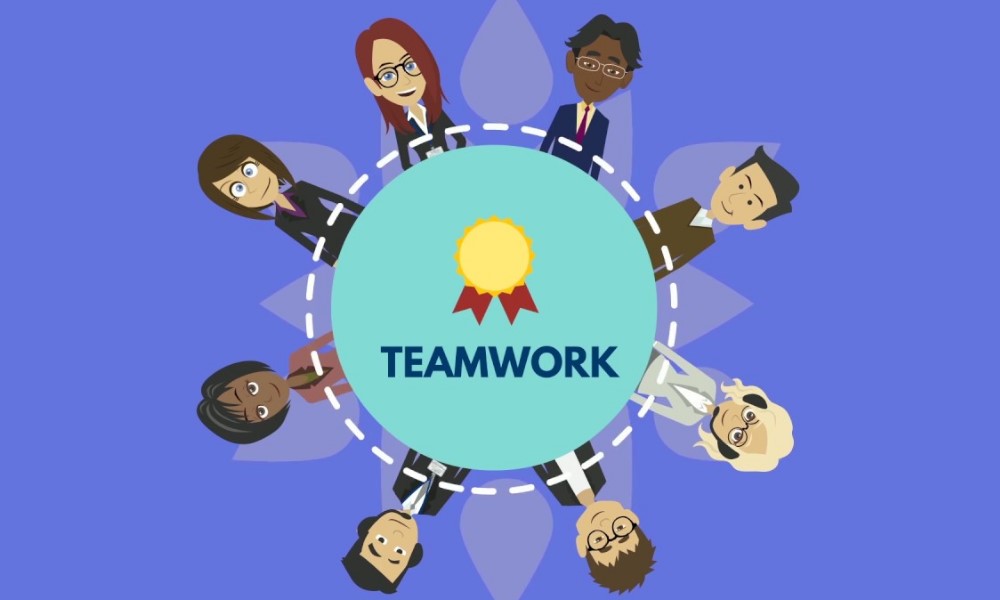Best Strategies for Effective Team Building and Leadership in 2024
Effective team building and leadership are crucial for the success of any organization. In this comprehensive guide, we will explore the Best Strategies for Effective Team Building and Leadership, the benefits of these strategies, and provide real-world examples to help you implement them successfully.
Understanding Team Building and Leadership

Team building and leadership are interconnected concepts crucial for organizational success. Team building involves creating and nurturing a cohesive group of individuals who work collaboratively towards a common goal. This process includes setting clear objectives, fostering open communication, defining roles and responsibilities, and building trust among team members.
Leadership, on the other hand, focuses on guiding and influencing the team to achieve its goals. Effective leaders provide vision and direction, empower team members, offer support and development opportunities, and adapt to changing circumstances. They recognize and reward contributions, creating a motivated and high-performing team.
Together, team building and leadership enhance productivity, foster innovation, and contribute to a positive organizational culture. By cultivating strong teams and providing effective leadership, organizations can achieve their objectives, navigate challenges, and drive long-term success.
Key Elements of Effective Team Building
Effective team building is essential for creating a cohesive and productive work environment. Here are the key elements:
Clear Goals and Objectives
Features:
- Specific, Measurable, Achievable, Relevant, Time-bound (SMART) goals.
- Clear direction and purpose for the team.
- Regular progress reviews and adjustments.
Communication
Features:
- Open and transparent channels.
- Regular team meetings and updates.
- Use of collaboration tools like Slack or Microsoft Teams.
Role Clarity
Features:
- Defined roles and responsibilities.
- Clear understanding of individual contributions to the overall goal.
- Job descriptions and task assignments.
Trust and Respect
Features:
- Promoting a culture of mutual respect.
- Encouraging open dialogue and feedback.
- Recognition of team members’ efforts and achievements.
Engagement and Inclusion
Features:
- Involving team members in decision-making processes.
- Encouraging diverse perspectives and ideas.
- Team-building activities and events to foster camaraderie.
These elements collectively contribute to a strong, efficient, and motivated team, capable of achieving their objectives and driving organizational success.
Key Elements of Effective Leadership
Effective leadership is the cornerstone of a successful organization. Leaders who exhibit strong leadership qualities inspire and guide their teams toward achieving their goals. Here are the key elements of effective leadership:
Vision and Direction
Feature: Clear Vision
- Leaders must have a clear vision and communicate it effectively to their team.
- This vision provides a roadmap and motivates the team to work towards common objectives.
Empowerment
Feature: Delegation of Authority
- Empowering team members by delegating tasks and responsibilities fosters trust and ownership.
- Leaders should provide the necessary resources and support to help team members succeed.
Support and Development
Feature: Professional Growth Opportunities
- Leaders should invest in the development of their team by offering training, mentorship, and career growth opportunities.
- This support helps in enhancing skills and boosting morale.
Adaptability
Feature: Flexibility in Approach
- Effective leaders are adaptable and can pivot strategies when needed.
- They are open to new ideas and can manage change efficiently.
Recognition and Reward
Feature: Acknowledgement of Achievements
- Recognizing and rewarding the efforts and accomplishments of team members is crucial.
- This acknowledgment boosts motivation and encourages continued excellence.
Communication
Feature: Open and Transparent Communication
- Maintaining clear and consistent communication ensures that all team members are aligned.
- Open communication builds trust and facilitates collaboration.
Benefits of Effective Team Building and Leadership

Improved Productivity
Effective team building and leadership lead to higher productivity. Clear goals, open communication, and defined roles ensure that team members are focused and efficient. Leaders who empower and support their teams create an environment where employees are motivated to perform at their best.
Enhanced Employee Satisfaction
A cohesive team and strong leadership contribute to higher employee satisfaction. When team members feel valued, respected, and included, they are more likely to be engaged and committed to their work. This results in lower turnover rates and a more stable workforce.
Better Problem-Solving
Diverse teams that collaborate effectively can tackle complex problems more efficiently. Open communication and inclusive decision-making processes ensure that multiple perspectives are considered, leading to innovative solutions. Effective leaders facilitate this process by guiding and supporting the team.
Increased Innovation
Empowered teams are more likely to experiment and innovate. When leaders encourage initiative and provide autonomy, team members are more willing to take risks and explore new ideas. This culture of innovation drives continuous improvement and competitive advantage.
Stronger Organizational Culture
Effective team building and leadership contribute to a positive organizational culture. Trust, respect, and collaboration create a supportive work environment where employees feel connected and motivated. Strong leaders who model these values reinforce the culture and inspire their teams.
Real-World Examples of Team Building and Leadership Strategies

1. Slack
Website: Slack
Features:
- Real-time messaging and file sharing
- Integration with various tools and services
- Channels for organized communication
- Video and voice calls
Pros:
- Enhances communication and collaboration
- Easy to use and integrates with many apps
- Reduces email clutter
Cons:
- Can be distracting if not managed properly
- Learning curve for new users
Price: Free tier available, paid plans start at $6.67 per user/month
2. Asana
Website: Asana
Features:
- Task and project management
- Timeline and calendar views
- Team collaboration and communication tools
- Reporting and analytics
Pros:
- Improves task management and organization
- Facilitates team collaboration
- Provides visibility into project progress
Cons:
- Can be complex for small teams
- Higher cost for premium features
Price: Free tier available, paid plans start at $10.99 per user/month
3. Zoom
Website: Zoom
Features:
- Video conferencing and webinars
- Screen sharing and virtual backgrounds
- Breakout rooms for smaller group discussions
- Recording and transcription
Pros:
- High-quality video and audio
- User-friendly interface
- Supports large meetings and webinars
Cons:
- Security concerns with unauthorized access
- Free version has time limits on meetings
Price: Free tier available, paid plans start at $14.99 per month/host
4. Trello
Website: Trello
Features:
- Visual task management with boards, lists, and cards
- Collaboration tools for teams
- Integration with other apps and services
- Customizable workflows
Pros:
- Simple and intuitive interface
- Flexible and adaptable to different workflows
- Free version offers ample features
Cons:
- Limited advanced features in the free version
- Can become cluttered with too many boards
Price: Free tier available, paid plans start at $9.99 per user/month
5. Microsoft Teams
Website: Microsoft Teams
Features:
- Team chat and messaging
- Video and audio calls
- Integration with Microsoft Office 365
- Collaboration and file sharing
Pros:
- Seamless integration with Office 365
- Robust communication and collaboration features
- Suitable for large organizations
Cons:
- Can be overwhelming for new users
- Requires Office 365 subscription for full features
Price: Free tier available, paid plans start at $5.00 per user/month
Comparison Table of Team Building and Leadership Tools
| Tool | Use Case | Pros | Cons | Price | Features |
|---|---|---|---|---|---|
| Slack | Communication | Enhances collaboration, integrates apps | Can be distracting | Free, paid plans from $6.67/month | Messaging, file sharing, channels, video/voice calls |
| Asana | Task management | Improves organization, team collaboration | Complex for small teams | Free, paid plans from $10.99/month | Task management, timelines, communication, reporting |
| Zoom | Video conferencing | High-quality video/audio, user-friendly | Security concerns | Free, paid plans from $14.99/month | Video conferencing, screen sharing, breakout rooms, recording |
| Trello | Task management | Simple interface, flexible workflows | Limited advanced features in free version | Free, paid plans from $9.99/month | Boards, lists, cards, integration, customization |
| Microsoft Teams | Collaboration | Integrates with Office 365, robust features | Overwhelming for new users | Free, paid plans from $5.00/month | Team chat, video/audio calls, Office 365 integration |
Benefits of Specific Tools for Team Building and Leadership
Slack
Enhanced Communication: Slack improves team communication by providing a platform for real-time messaging, file sharing, and organized channels. It reduces the reliance on emails and fosters a collaborative environment where team members can easily communicate and share information.
Integration with Other Tools: Slack integrates with numerous other tools and services, allowing teams to streamline their workflows and access all necessary resources from one platform. This integration enhances productivity and simplifies project management.
Asana
Improved Task Management: Asana helps teams manage tasks and projects efficiently by providing tools for tracking progress, setting deadlines, and assigning responsibilities. The visual interface allows teams to see the status of their projects at a glance, ensuring everyone stays on track.
Collaboration Features: Asana’s collaboration features, such as comments, file attachments, and team communication tools, facilitate seamless teamwork. These features ensure that all team members are on the same page and can contribute effectively to project goals.
Zoom
High-Quality Video Conferencing: Zoom offers reliable and high-quality video conferencing, making it an essential tool for remote teams. Its user-friendly interface and robust features, such as screen sharing and breakout rooms, enhance virtual meetings and collaboration.
Scalability: Zoom supports large meetings and webinars, making it suitable for organizations of all sizes. This scalability ensures that teams can continue to use Zoom as they grow and their needs evolve.
Trello
Visual Task Management: Trello’s visual task management system, with boards, lists, and cards, makes it easy for teams to organize and track their tasks. This system is intuitive and flexible, allowing teams to customize their workflows according to their specific needs.
Collaboration Tools: Trello’s collaboration tools, such as comments, file attachments, and due dates, facilitate teamwork and ensure that all tasks are completed on time. These tools help teams stay organized and efficient.
Microsoft Teams
Integration with Office 365: Microsoft Teams integrates seamlessly with Office 365, providing access to all the tools and applications that teams need to work effectively. This integration streamlines workflows and enhances productivity.
Robust Communication Features: Microsoft Teams offers comprehensive communication features, including team chat, video and audio calls, and file sharing. These features ensure that teams can communicate and collaborate effectively, regardless of their location.
How to Implement Effective Team Building and Leadership Strategies
- Set Clear Goals:
- Establish specific, measurable, achievable, relevant, and time-bound (SMART) goals for your team.
- Communicate these goals clearly and ensure that all team members understand their roles in achieving them.
- Foster Open Communication:
- Encourage open and transparent communication within the team.
- Use tools like Slack or Microsoft Teams to facilitate real-time communication and collaboration.
- Build Trust and Respect:
- Promote a culture of trust and respect by recognizing and valuing each team member’s contributions.
- Encourage team members to share their ideas and opinions.
- Encourage Engagement and Inclusion:
- Involve team members in decision-making processes to increase engagement and ownership.
- Create an inclusive environment where diverse perspectives are welcomed and valued.
- Provide Support and Development:
- Offer support and resources to help team members achieve their goals.
- Invest in professional development opportunities to enhance their skills and capabilities.
Conclusion
Effective team building and leadership are vital for organizational success. By setting clear goals, fostering open communication, and building trust, leaders can create cohesive and productive teams. Utilizing tools like Slack, Asana, and Microsoft Teams can enhance collaboration and efficiency.
Empowering team members and providing support and development opportunities further drive innovation and satisfaction. Implementing these strategies ensures a motivated workforce capable of achieving organizational goals and sustaining a positive work environment.
Embrace these best practices to enhance your leadership skills and foster a culture of teamwork and excellence within your organization.
FAQs
1. What are the benefits of effective team building and leadership?
Answer: Effective team building and leadership improve productivity, enhance employee satisfaction, foster better problem-solving, increase innovation, and contribute to a positive organizational culture.
2. How can I improve communication within my team?
Answer: Improve communication by fostering an open and transparent environment, using communication tools like Slack or Microsoft Teams, and holding regular team meetings and updates.
3. What tools can help with task management and collaboration?
Answer: Tools like Asana, Trello, and Microsoft Teams can help with task management and collaboration by providing features for tracking progress, setting deadlines, and facilitating team communication.
4. How can I empower my team members?
Answer: Empower your team members by delegating tasks, providing autonomy, encouraging initiative, and supporting their professional development.
5. What strategies can I use to build trust within my team?
Answer: Build trust by promoting a culture of respect, recognizing and valuing contributions, encouraging open communication, and involving team members in decision-making processes.